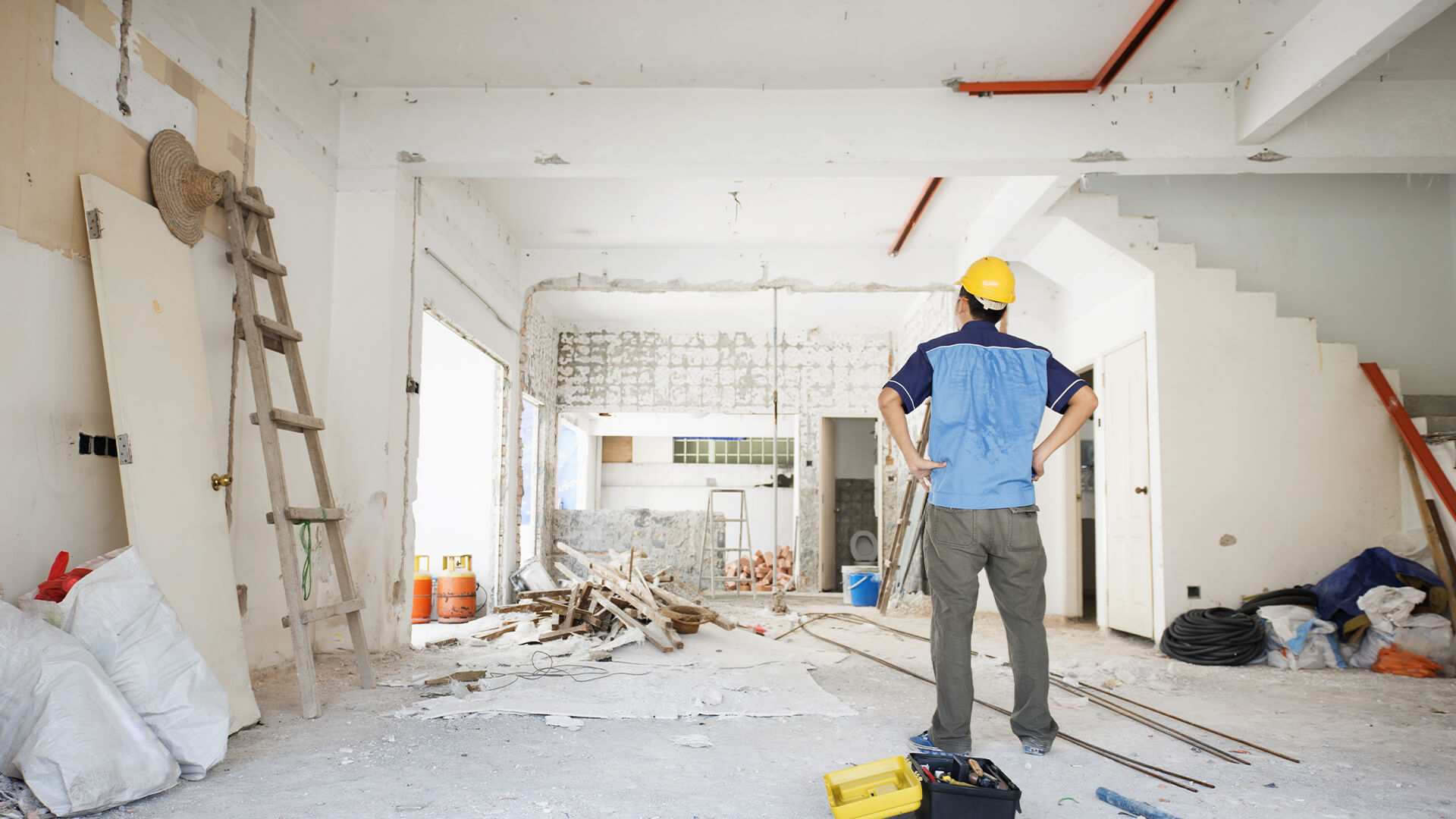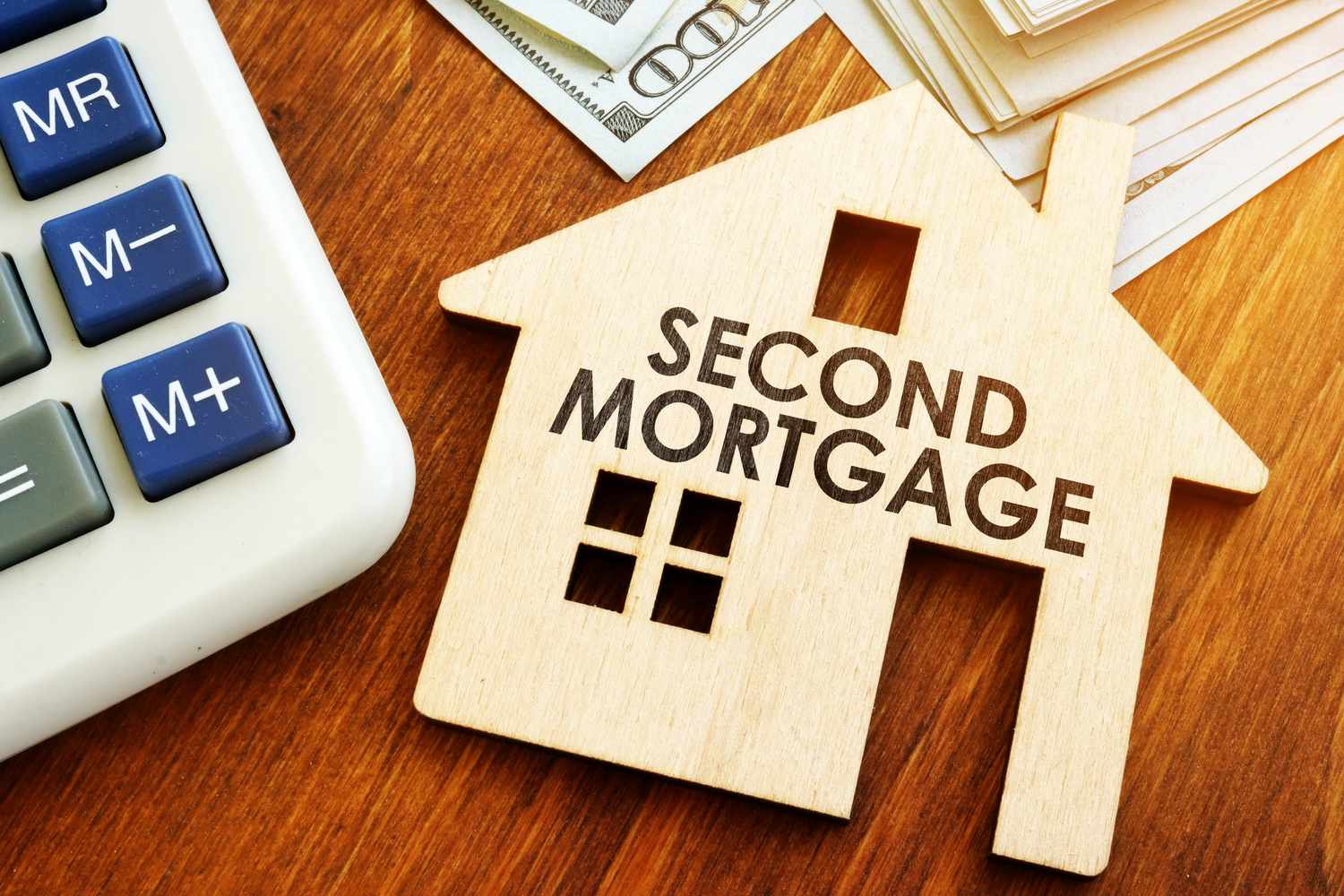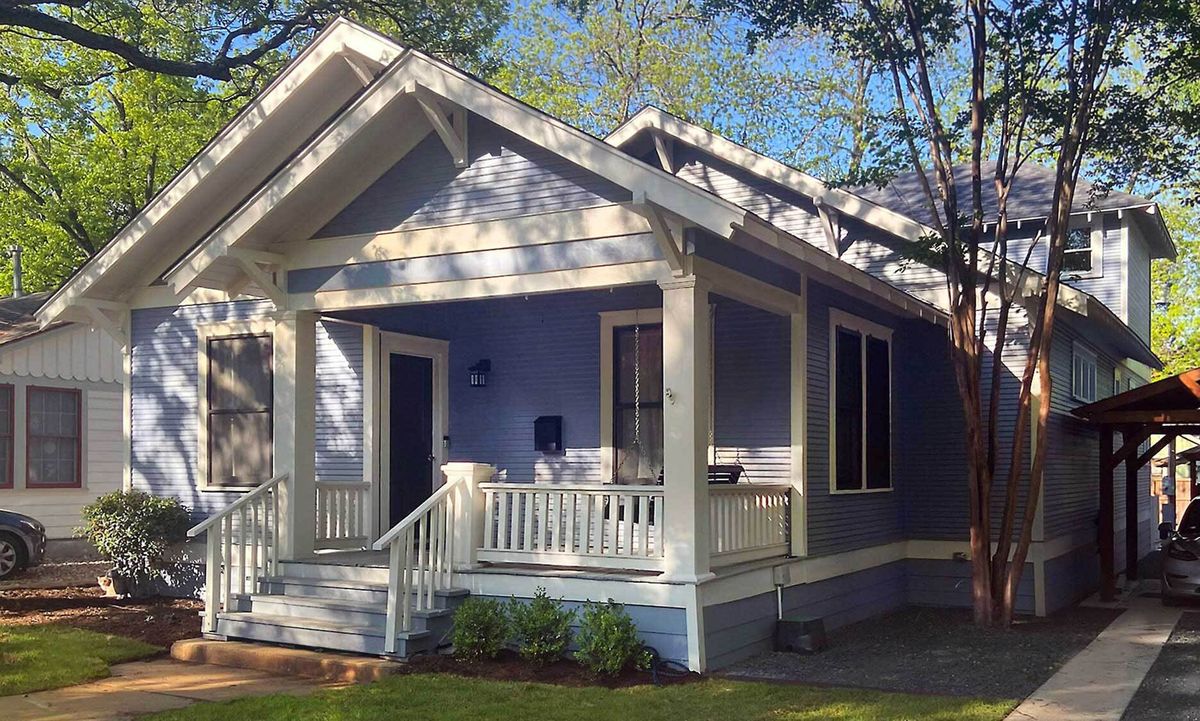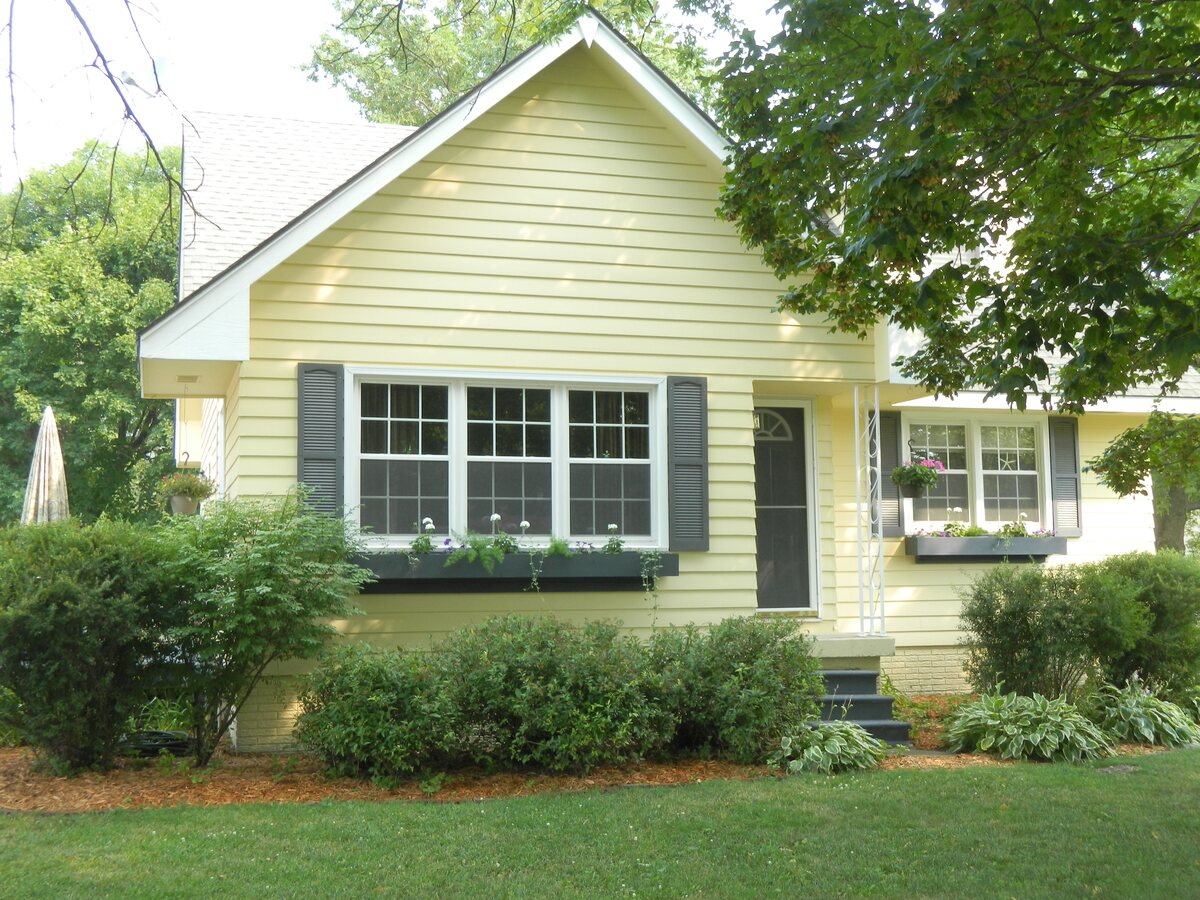Home>diy>Home Improvement>What Is Homepath Renovation Mortgage


Home Improvement
What Is Homepath Renovation Mortgage
Modified: February 25, 2024
Learn about HomePath Renovation Mortgage, a great option for financing your home improvement projects. Find out how it can make your dream home a reality.
(Many of the links in this article redirect to a specific reviewed product. Your purchase of these products through affiliate links helps to generate commission for Storables.com, at no extra cost. Learn more)
Introduction
Welcome to the world of home improvement! Whether you’re a seasoned homeowner or a first-time buyer, there’s no denying the excitement and satisfaction that comes with transforming your living space into a personal oasis. But home improvement projects can often come with a hefty price tag, leaving many homeowners seeking financing solutions to make their dreams a reality. This is where the Homepath Renovation Mortgage steps in.
The Homepath Renovation Mortgage is a specialized loan program designed to help homeowners finance both the purchase of a home and the cost of renovations in one convenient mortgage. It offers a unique opportunity to buyers who want to turn a fixer-upper into their dream home without having to secure separate financing for the renovations.
But what exactly is the Homepath Renovation Mortgage, and how does it work? In this article, we’ll dive into the details of this financing option, explore its benefits and drawbacks, and provide you with a step-by-step guide on how to apply. By the end, you’ll have a solid understanding of how the Homepath Renovation Mortgage can help you achieve your home improvement goals.
Key Takeaways:
- The Homepath Renovation Mortgage offers a convenient way to finance both home purchase and renovation costs in one loan, with competitive interest rates and the potential to increase property value.
- Pros and cons of the Homepath Renovation Mortgage highlight streamlined financing and customization benefits, along with potential challenges such as eligibility criteria and renovation costs.
Read more: What Is Home Renovation
What is Homepath Renovation Mortgage?
Before we delve into the intricacies of the Homepath Renovation Mortgage, let’s start with the basics. The Homepath Renovation Mortgage is a specialized loan program offered by Fannie Mae, a government-sponsored enterprise that provides liquidity to the mortgage market. This program allows homebuyers to finance the purchase of a home and the cost of renovations through a single mortgage.
The purpose of the Homepath Renovation Mortgage is to make it easier for buyers to purchase homes in need of repairs or that require updates. It offers an attractive financing option by combining the purchase price of the home and the estimated cost of renovations into one loan. This means that homebuyers don’t have to exhaust their savings or secure additional financing to fund the necessary renovations.
Eligibility requirements for the Homepath Renovation Mortgage are relatively straightforward. To qualify, buyers must be purchasing a Homepath property, which is a foreclosed property owned by Fannie Mae. These properties are often priced below market value and present an opportunity for buyers to invest in a home with renovation potential.
Benefits of the Homepath Renovation Mortgage are plentiful. First and foremost, it allows buyers to finance the purchase and renovation costs through one mortgage. This streamlines the financing process and eliminates the need for multiple loan applications and approvals. Additionally, the program offers competitive interest rates and flexible repayment terms.
Furthermore, one of the standout benefits of the Homepath Renovation Mortgage is the ability to customize the home to your specific needs and preferences. Whether it’s updating the kitchen, remodeling the bathroom, or adding an additional bedroom, the funds from the loan can be used to transform the property into your dream home.
Lastly, by purchasing a Homepath property and using the Homepath Renovation Mortgage, buyers may benefit from the added value their renovations bring. As the property improves, its market value is likely to increase, potentially providing homeowners with a return on their investment.
How Does Homepath Renovation Mortgage Work?
Now that we have a solid understanding of what the Homepath Renovation Mortgage is, let’s explore how this specialized loan program works.
Loan Structure: The Homepath Renovation Mortgage combines the purchase price of the home and the estimated cost of renovations into a single loan. This means that buyers can finance both the acquisition of the property and the funds needed to renovate it. The loan amount is based on the projected value of the home after renovations are completed.
Application Process: To apply for the Homepath Renovation Mortgage, buyers must first find a Homepath property that meets their needs. Once they have selected a property, they can work with a lender who offers the Homepath Renovation Mortgage program. The application process is similar to traditional mortgage applications and involves providing documentation such as income verification, credit history, and details about the renovations planned.
Loan Amount and Terms: The loan amount for the Homepath Renovation Mortgage is typically based on the purchase price of the property plus the renovation costs. The specific terms of the loan, including interest rates, down payment requirements, and repayment terms, will vary depending on factors such as the borrower’s credit score, financial history, and the lender’s policies. It’s important to work closely with a lender to understand all the details and options available.
Repayment Options: The Homepath Renovation Mortgage offers flexibility when it comes to repayment. Buyers can choose from various repayment options, including fixed-rate mortgages, adjustable-rate mortgages, and interest-only mortgages. The chosen repayment option will determine how monthly payments are calculated and may impact the total cost of the loan over time. It’s crucial to carefully review each option and consider your long-term financial goals before making a decision.
By understanding the loan structure, application process, loan amount and terms, and repayment options of the Homepath Renovation Mortgage, buyers can make informed decisions and navigate the financing process with confidence. Remember to consult with a trusted lender to ensure you have all the necessary information and guidance throughout the process.
Pros and Cons of Homepath Renovation Mortgage
Like any financial product, the Homepath Renovation Mortgage comes with its own set of advantages and disadvantages. Let’s take a closer look at both sides to help you assess if this loan program is the right fit for your home improvement needs.
Advantages:
- Streamlined Financing: One of the biggest advantages of the Homepath Renovation Mortgage is the convenience of financing both the purchase and renovation costs through a single mortgage. This eliminates the need for separate loans and simplifies the overall financing process.
- Customization: The ability to borrow funds for renovations allows homeowners to tailor the property to their personal preferences and needs. Buyers can transform a fixer-upper into their dream home, whether it’s updating outdated features or adding new amenities.
- Competitive Interest Rates: The Homepath Renovation Mortgage offers competitive interest rates, which can save homeowners money over the life of the loan. Comparing rates from different lenders is crucial to ensure you secure the best rate available.
- Increased Property Value: By renovating a home purchased through the Homepath Renovation Mortgage, homeowners have the potential to increase its market value. This can result in a return on investment and build equity in the property.
- Flexible Repayment Options: The Homepath Renovation Mortgage offers a range of repayment options, allowing borrowers to choose a plan that aligns with their financial goals and circumstances. This flexibility ensures that the loan is manageable and fits within the borrower’s budget.
Disadvantages:
- Eligibility Criteria: The Homepath Renovation Mortgage is limited to Homepath properties owned by Fannie Mae. This means buyers must find a suitable property within their target location that is eligible for the program, which can narrow down the options available.
- Renovation Challenges: Taking on a renovation project is not without its challenges. Buyers must carefully plan and manage the renovations, which can be time-consuming and may require hiring contractors, obtaining permits, and overseeing the construction process.
- Potentially Higher Costs: While the Homepath Renovation Mortgage provides a financing solution for renovations, it’s important to consider the overall costs involved. Renovations can be costly, and buyers must be prepared to cover any expenses that exceed the initial loan amount.
- Market Conditions: The value of the property after renovations largely depends on market conditions. Fluctuations in the real estate market can affect the potential return on investment, and homeowners should be aware of these risks.
- Financial Responsibility: Borrowers should carefully assess their financial situation and ensure they will be able to meet monthly mortgage payments, including both the purchase price and renovation costs. Failure to make timely repayments can result in financial stress and potential consequences.
By weighing the advantages and disadvantages of the Homepath Renovation Mortgage, prospective homeowners can make an informed decision and determine if this financing option aligns with their goals, budget, and renovation aspirations.
HomePath Renovation Mortgage is a type of loan that allows homebuyers to finance both the purchase price and renovation costs of a property in one loan. It’s a great option for purchasing a fixer-upper and making it your dream home.
Steps to Apply for Homepath Renovation Mortgage
If you’ve decided that the Homepath Renovation Mortgage is the right financing option for your home improvement project, it’s time to take the necessary steps to apply. Let’s walk through the process to help you get started.
1. Gathering necessary documents: Before applying for the Homepath Renovation Mortgage, it’s important to gather all the required documents. These typically include proof of income, employment verification, bank statements, tax returns, and identification. It’s a good idea to contact your chosen lender to get a comprehensive list of the documents they require.
2. Finding eligible properties: Since the Homepath Renovation Mortgage is specifically designed for Homepath properties, you’ll need to find properties that are eligible for the program. You can search for these properties on Fannie Mae’s Homepath website or work with a real estate agent knowledgeable about Homepath listings. Take your time to research and visit potential properties to ensure they meet your needs and renovation plans.
3. Selecting a lender: Once you’ve identified eligible properties, it’s time to select a lender who offers the Homepath Renovation Mortgage program. Look for lenders with experience and expertise in this type of financing. Consider factors such as interest rates, loan terms, and customer reviews to make an informed decision. It’s recommended to consult with multiple lenders to compare their offerings and choose the best fit for your financial goals.
4. Submitting the application: With your chosen lender in mind, it’s time to submit your application for the Homepath Renovation Mortgage. This typically involves completing a mortgage application form provided by the lender and submitting the necessary supporting documents. Be prepared to provide detailed information about the property, renovation plans, and your financial situation.
Throughout the application process, it’s crucial to stay in close communication with your lender. They will guide you through the necessary steps, answer any questions you may have, and ensure you have a clear understanding of the terms and conditions of the Homepath Renovation Mortgage.
By following these steps and working closely with your lender, you’ll be on your way to securing the Homepath Renovation Mortgage and turning your vision for a dream home into a reality.
Read more: Tips for Trimming Your Mortgage Expenses
Understanding the Renovation Process
Congratulations! You’ve successfully obtained the Homepath Renovation Mortgage and are now ready to embark on your home improvement journey. Understanding the renovation process is crucial to ensure a smooth and successful experience. Let’s explore the key steps involved in transforming your newly purchased home.
1. Planning the renovation: Before starting any renovations, it’s essential to create a comprehensive plan. Evaluate the condition of the property and identify the areas that require improvement. Make a list of the renovations you want to undertake, such as updating the kitchen, remodeling the bathroom, or adding a new room. Determine your budget and prioritize the renovations accordingly. It’s helpful to consult with a professional contractor or interior designer to get expert advice and guidance.
2. Hiring contractors: Once you have a clear renovation plan, it’s time to hire reputable contractors to execute the work. Research and interview multiple contractors to compare their experience, credentials, and pricing. Ask for references, view their previous work, and ensure they are licensed and insured. Communication is key, so choose contractors who understand your vision and are willing to work closely with you throughout the process.
3. Obtaining necessary permits: Depending on the scope of your renovations, you may need to obtain permits from your local government or homeowners’ association. Ensure you are aware of any regulations and requirements specific to your area. Applying for and obtaining the necessary permits before commencing work will help you avoid any legal complications down the line.
4. Completing renovations: With your renovation plan in place, contractors hired, and permits obtained, it’s time to begin the construction phase. Make sure you have open lines of communication with your contractors and establish a project timeline. Regularly visit the site to monitor progress, address any concerns, and make any necessary adjustments. Stay involved in decision-making and keep track of expenses to ensure the project stays within budget.
Throughout the renovation process, be prepared for unexpected challenges and delays. It’s important to maintain a flexible mindset and be proactive in resolving issues as they arise. Regularly communicate with your lenders and keep them informed of the progress. They can provide guidance and support throughout the renovation journey.
By thoroughly planning your renovations, hiring reliable contractors, obtaining necessary permits, and actively overseeing the construction, you can ensure a successful and satisfying home transformation with the help of the Homepath Renovation Mortgage.
Finalizing the Homepath Renovation Mortgage
As your renovation project nears completion, it’s important to understand the final steps of finalizing your Homepath Renovation Mortgage. Let’s explore the key aspects of this process, from loan closing to repayment and potential refinancing options.
Loan closing process: Once your renovations are complete, you will proceed to the loan closing process. This involves signing the necessary paperwork to finalize the Homepath Renovation Mortgage. The closing process typically takes place at a title company or attorney’s office and involves reviewing and signing the mortgage note, deed of trust, and other loan-related documents. The lender will also provide a final breakdown of all costs and fees associated with the loan.
Making payments: After the loan closing, it’s time to start making payments on your Homepath Renovation Mortgage. Your lender will provide information on how, when, and where to make your mortgage payments. It’s essential to adhere to the payment schedule and ensure timely payments to avoid any penalties or negative impact on your credit standing. Set up automatic payments or create reminders to stay organized and on track.
Potential refinancing options: As a homeowner, you may consider refinancing your Homepath Renovation Mortgage in the future. Refinancing involves replacing your existing mortgage with a new one, potentially with better terms or rates. Refinancing can be a strategic move to lower monthly payments or reduce the overall interest paid over the life of the loan. It’s important to assess market conditions, consult with your lender, and carefully evaluate the costs and benefits before deciding to refinance.
Throughout the repayment period, maintain open lines of communication with your lender. They can provide guidance, address any concerns or questions you may have, and assist you in managing your Homepath Renovation Mortgage effectively.
Remember that homeownership is a long-term commitment, and successfully repaying your Homepath Renovation Mortgage can have a positive impact on your financial future. By making your payments on time, you’ll build equity in your property and potentially create opportunities for future financial growth.
With the loan closing process completed, payments in progress, and potential refinancing options considered, you can confidently enjoy the fruits of your renovation labor and make the most of your newly transformed home.
Conclusion
Congratulations on reaching the conclusion of this comprehensive guide to the Homepath Renovation Mortgage! We’ve covered everything from understanding the basics of this specialized loan program to navigating the application process, managing the renovation journey, and finalizing the loan. By now, you should have a well-rounded understanding of what the Homepath Renovation Mortgage entails and how it can help you achieve your home improvement goals.
The Homepath Renovation Mortgage offers a unique opportunity for homeowners to finance both the purchase price of a home and the cost of renovations in one convenient mortgage. With competitive interest rates, flexible repayment options, and the potential to increase property value, this financing option can be an attractive solution for those looking to turn a fixer-upper into their dream home.
When applying for the Homepath Renovation Mortgage, it’s important to gather all necessary documents, find eligible properties, select a reputable lender, and submit a thorough application. Once approved, the renovation process begins, and careful planning, hiring contractors, obtaining permits, and overseeing the construction are key to a successful transformation.
As you near the completion of your renovations, the loan closing process will finalize the Homepath Renovation Mortgage. Making timely payments is essential to maintain a healthy financial standing and potentially build equity in your home. Additionally, exploring potential refinancing options in the future can help optimize your mortgage terms and save you money in the long run.
Remember, homeownership and renovation projects are significant endeavors that require careful planning, budgeting, and decision-making. It’s important to consult with experienced professionals, including real estate agents, contractors, lenders, and financial advisors, to ensure you make informed choices throughout the process.
Now armed with the knowledge and understanding of the Homepath Renovation Mortgage, you’re ready to embark on your home improvement journey. Turn your vision into a reality, create your dream home, and enjoy the fruits of your hard work and investment.
Best of luck on your renovation adventure!
Frequently Asked Questions about What Is Homepath Renovation Mortgage
Was this page helpful?
At Storables.com, we guarantee accurate and reliable information. Our content, validated by Expert Board Contributors, is crafted following stringent Editorial Policies. We're committed to providing you with well-researched, expert-backed insights for all your informational needs.















0 thoughts on “What Is Homepath Renovation Mortgage”